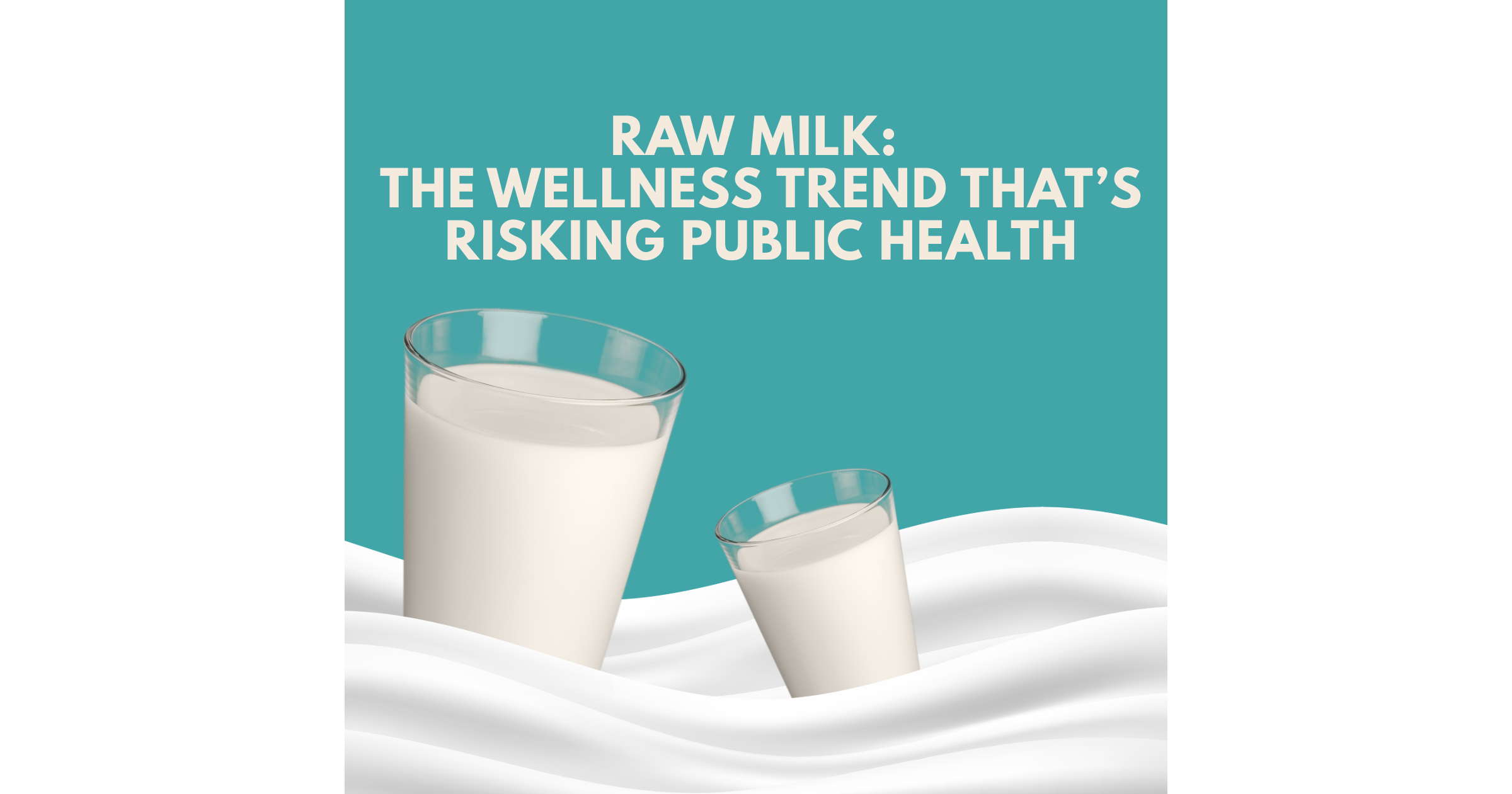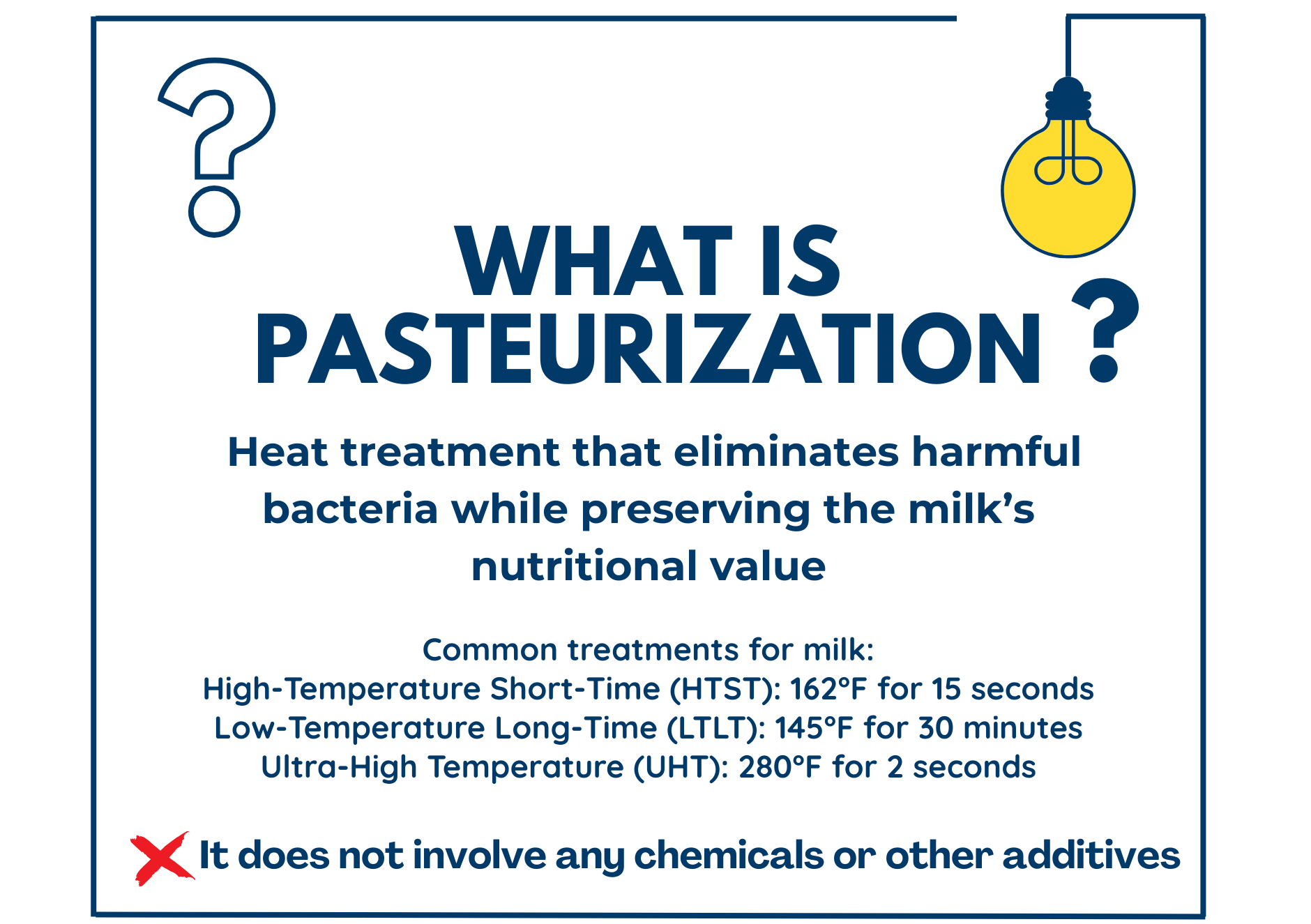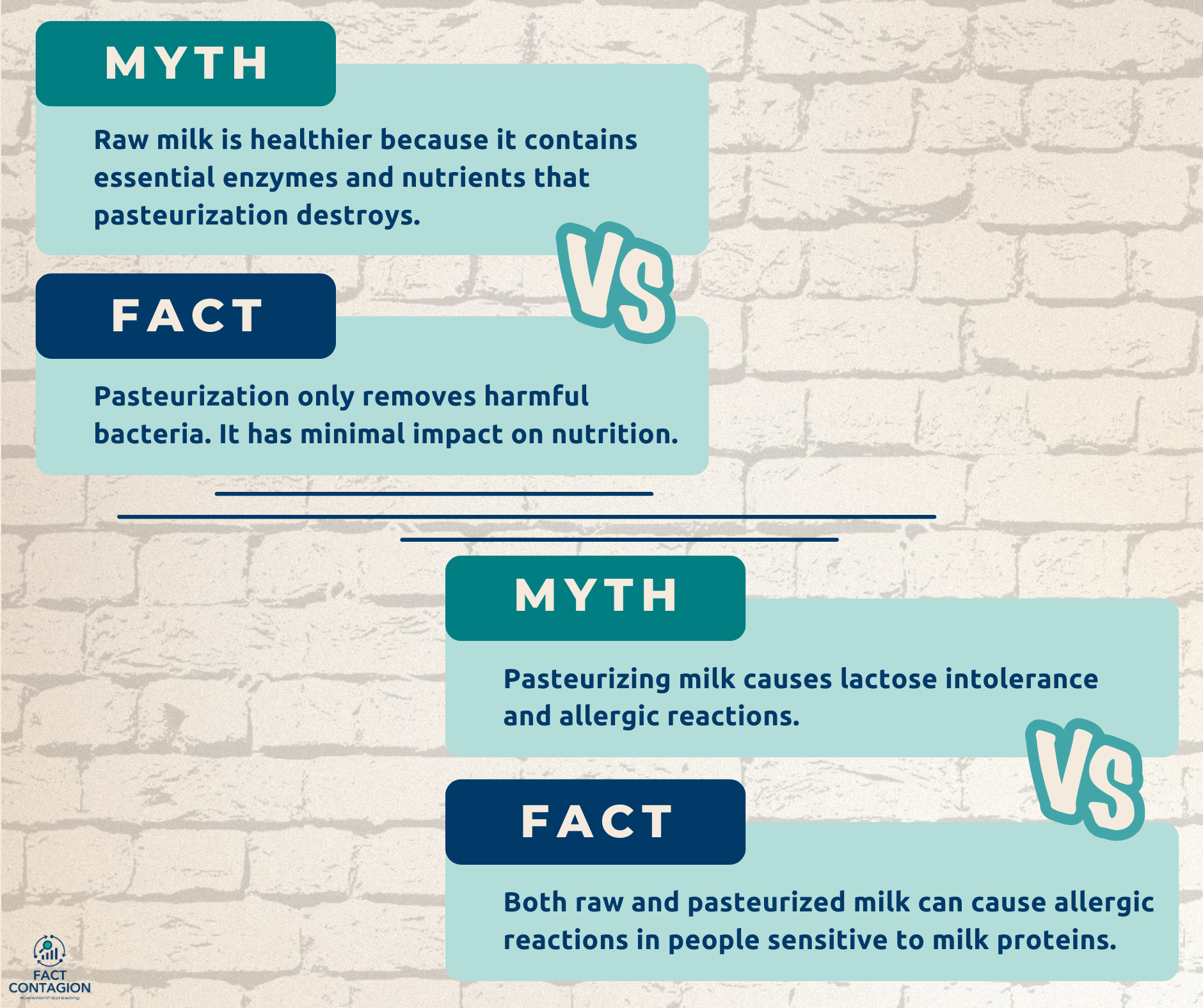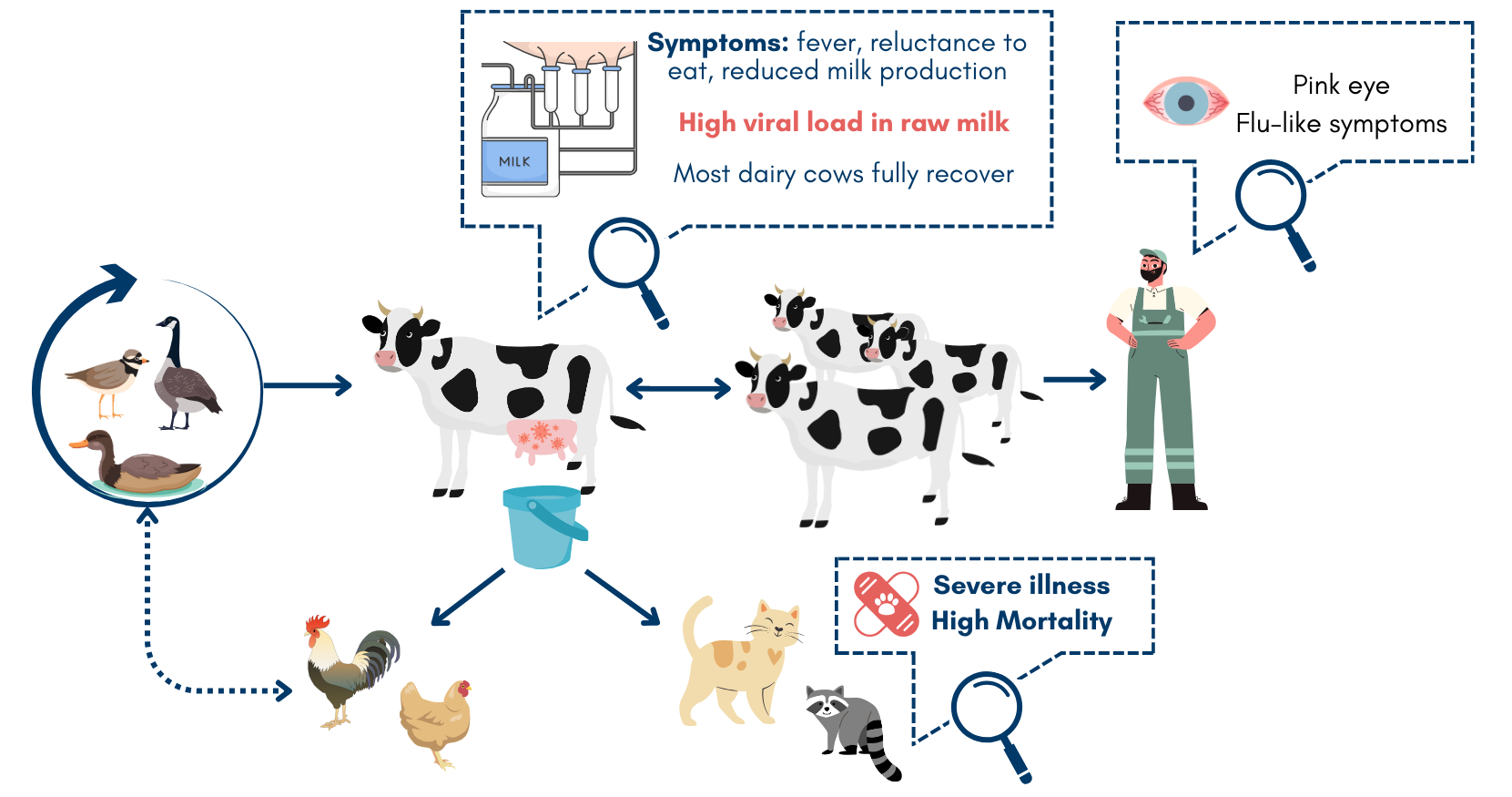Raw Milk: The Wellness Trend That’s Risking Public Health

Is Raw Milk the New Anti-Vax Craze among Crunchy Yoga Moms?
Apologies for the inflammatory question, but you get the point.
Raw milk has become the latest wellness fad, marketed as a wholesome, natural superfood that boosts immunity and gut health. Wellness influencers and homesteaders have advocated for raw milk over pasteurized milk, claiming it retains enzymes and "good" bacteria.
But the reality is raw milk has zero advantages and can be contaminated with dangerous bacteria capable of causing everything from minor gastrointestinal upset to severe illness and even death, particularly in those who are immunocompromised, young children, pregnant individuals, and the elderly. There is a clear scientific consensus that the risks of consuming raw milk far outweigh any potential benefits. But akin to the anti-vaccine movement, the raw milk trend is thriving on misinformation, anecdotal stories, social media echo chambers, and public health distrust.
A Historical Look into Pasteurization's Story
Pasteurization is named after Louis Pasteur, a French chemist, pharmacist, and microbiologist, who demonstrated in the 1860s that unwanted fermentation of wine and beer could be avoided by gently heating to ~135°F for a few minutes. He effectively saved the French wine and beer industries from collapsing due to contamination problems during export.
Pasteurization quickly became standard in the wine and beer industries to prevent spoilage.

Within a few decades, scientists and public health officials began recognizing that milk (a significant source of tuberculosis, brucellosis, typhoid, and other diseases) could also benefit from pasteurization.
The first commercial milk pasteurizers were produced in 1882, using a high-temperature, short-time (HTST) process; the first law to require the pasteurization of milk was passed in Chicago in 1908. By 1917, pasteurization was readily accepted in the US, and in 1924, the US Public Health Service created the Standard Milk Ordinance for voluntary adoption by state and local government agencies. It's now called the Grade “A” Pasteurized Milk Ordinance (PMO).
In 1938, milk-borne outbreaks were responsible for 25% of all food/water-borne disease outbreaks in the US. With mandatory pasteurization laws in place, by the 1940s, most major US cities had significantly reduced rates of tuberculosis, typhoid fever, brucellosis, and other milk-borne illnesses.
In 1987, the FDA issued a nationwide ban on the interstate sale of raw milk for human consumption, reinforcing the public health importance of pasteurization.
By 2015, with the widespread use of pasteurization and other sanitation procedures, milk and milk products accounted for less than 1% of reported foodborne outbreaks.
What is Pasteurization?
Pasteurization is simply a heat treatment process that eliminates harmful bacteria, thereby prolonging storage and reducing food waste, while preserving nutritional value. The product is gently heated to a specific temperature for a (relatively short) time. No chemicals or other additives are involved.

Pasteurization of milk requires temperatures of ~145 °F for 30 minutes or ~162 °F for 15 seconds (or higher temperatures for even shorter duration). Time and temperature are determined by what is necessary to destroy Mycobacterium tuberculosis and other, more heat-resistant, non-spore-forming, disease-causing pathogens.
Benefits of Pasteurization
Removes harmful pathogens and prevents serious foodborne illness: Pasteurization kills bacteria that pose significant public health consequences, including E. coli, Salmonella, Listeria, and Campylobacter, and thus reduces your risk of acquiring a serious foodborne illness. Pasteurization is especially important for protecting children, pregnant individuals, the elderly, and those with weakened immune systems.
Extends Shelf Life: Pasteurization helps keep milk and dairy products fresher for longer and reduces food waste by slowing bacterial growth and deactivating spoilage-related enzymes.

Benefits of Raw Milk?
Various claims have been made about the possible health benefits of raw milk consumption. Yet, scientific consensus has concluded that no reliable evidence supports any suggested health benefits.
Myth: It preserves nutrients. Truth: Pasteurization causes a slight loss of riboflavin (vitamin B2), but key nutrients found in dairy products like calcium, vitamin D, and protein remain unaffected.
Myth: It doesn't elicit lactose intolerance or milk allergies. Truth: Consuming pasteurized milk does not increase one's risk of lactose intolerance or milk allergies more so than raw milk. Both raw and pasteurized milk can cause allergic reactions in people sensitive to milk proteins.

What about Enzymes??
One of the most common raw milk myths is that pasteurization "kills essential enzymes" that aid digestion. But the truth is there’s no scientific evidence that 1) these milk enzymes provide a unique health benefit, or 2) their loss impacts human digestion.
Let's examine why:
- Milk enzymes are not essential for human digestion (we produce our own enzymes).
- Pasteurization primarily deactivates spoilage-related enzymes (like lipase and phosphatase), which have zero effect on our nutritional health.
- Raw milk enzymes are broken down by our digestive tract anyway, so their presence or absence makes no difference.
- There's no scientific evidence that raw milk enzymes provide any health benefits.
Pasteurization doesn't destroy anything essential. What it does destroy is harmful bacteria that can make you sick.
Three Forces Driving the Raw Milk Trend
If the benefits of pasteurized milk outweigh the risks of raw milk, why are people drinking raw milk like it’s 1850, and germ theory hasn’t been invented yet?

#1. The Misinformation Playbook
You may have noticed that public health misinformation follows a blueprint. Vaccines, nutraceuticals, raw milk, or other “natural” wellness trends... the same tactics continue to be levied. Misinformation thrives on emotion.

#2. The Placebo Effect
Raw milk drinkers will report feeling healthier - their “proof” that raw milk is better. But this is likely due to the classic placebo effect (which is a real phenomenon). When you expect a health benefit, you'll perceive one even if there’s no physiological change.
What may be happening?
- Lifestyle and dietary changes: Many raw milk advocates will make also make other changes to their lifestyle or diet (e.g., increase exercise, prioritize sleep, eliminate ultra-processed foods), which could explain feeling better.
- Psychological reinforcement: If you believe raw milk is better, you’re more likely to focus on the positive effects of embracing a "healthier" food choice while ignoring adverse effects like digestive discomfort.
Similar to how anti-vaccine parents claim their unvaccinated children are healthier, raw milk enthusiasts often conflate correlation for causation when the real reason for any perceived benefits has nothing to do with raw milk.
#3. The ‘Natural’ Fallacy
The raw milk movement is fabricated on the pretense that “natural” implies safe or better. History tells a different story. Before pasteurization became standard practice, milk was a major source of:
- Tuberculosis: a bacterial disease leading to severe respiratory issues, swollen lymph nodes, intestinal infections, spinal deformities, meningitis, and drug-resistant complications.
- Brucellosis: a bacterial infection that can cause headaches, fever, abdominal pain, joint and muscle pain, undulant fever, and complications, including enlarged liver and personality changes.
- Typhoid Fever: a bacterial disease that causes a high fever, flu-like symptoms, and diarrhea.
Pasteurization wasn’t mandated to destroy milk’s good qualities. It stopped people from dying. Yet this "back to nature" logic persists within the wellness community, as seen with movements like the Paleo or Alkaline diets, essential oil "cures," and the anti-vaccine/natural immunity movement.
Just because something is “natural” doesn’t mean it’s better or safer.
A Note about H5N1 Avian Influenza
The United States is currently experiencing of an outbreak of the H5N1 highly pathogenic avian influenza (HPAI) virus in dairy herds. Since early 2024, 994 herds have been affected. Thankfully, the trajectory of the outbreak appears to be slowing in the last few months (although adequate surveillance and reporting may be in question).
This virus is thriving in dairy cows’ udders, and very high levels of live virus are shed in the raw milk from infected cows, which is fueling the spread among cattle herds. Pasteurization inactivates the H5N1 virus, and milk from impacted animals (albeit those that are reported) is being diverted or destroyed; therefore, commercially available pasteurized milk is safe for consumption. However, humans could be at risk of zoonotic infections by consuming contaminated raw milk. Viable H5N1 virus has been detected in a retail raw milk product purchased at a store in California, for which a recall was issued. No human illnesses were reported in connection.

Consuming raw milk or raw milk products should always be avoided, but the spread of H5N1 avian influenza via raw dairy products is yet another reason to stop playing milk roulette.
Takeaway: Don’t Fall for Another Wellness Trap
Like the anti-vaccine movement and other "natural" wellness fads, the raw milk trend thrives on misinformation and distrust of public health initiatives. Science (not social media anecdotes) should guide your food safety standards.
The undeniable truth is that pasteurization is one of history's most successful public health interventions. It has drastically reduced milk-borne illnesses and saved countless lives. Raw milk might feel trendy, but is it truly worth risking your and your family's safety? Especially when there are few (if any) actual benefits?
Bottom line: If you would avoid drinking from a random farm puddle, you should pass on raw milk, too. Choose science. Choose pasteurized.


